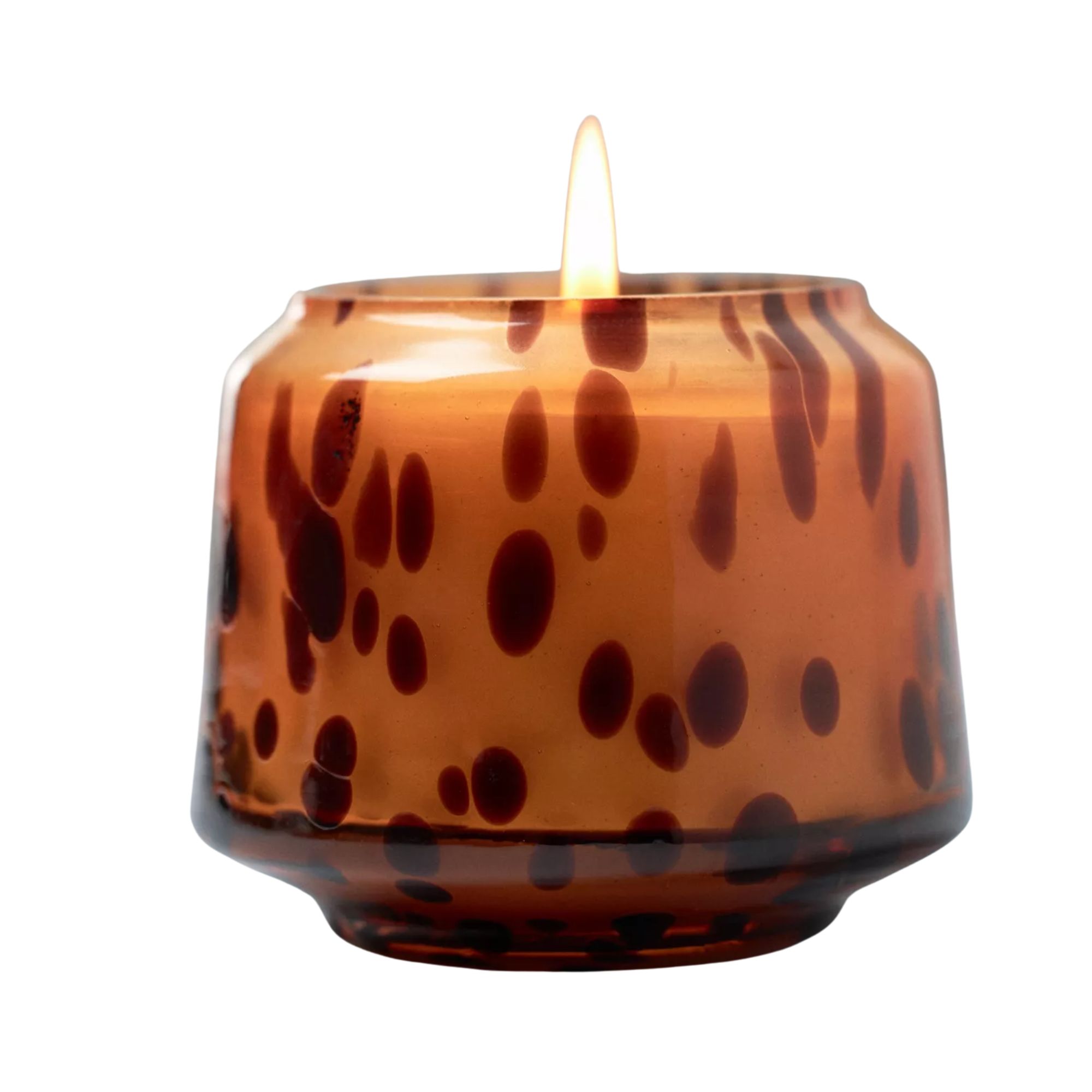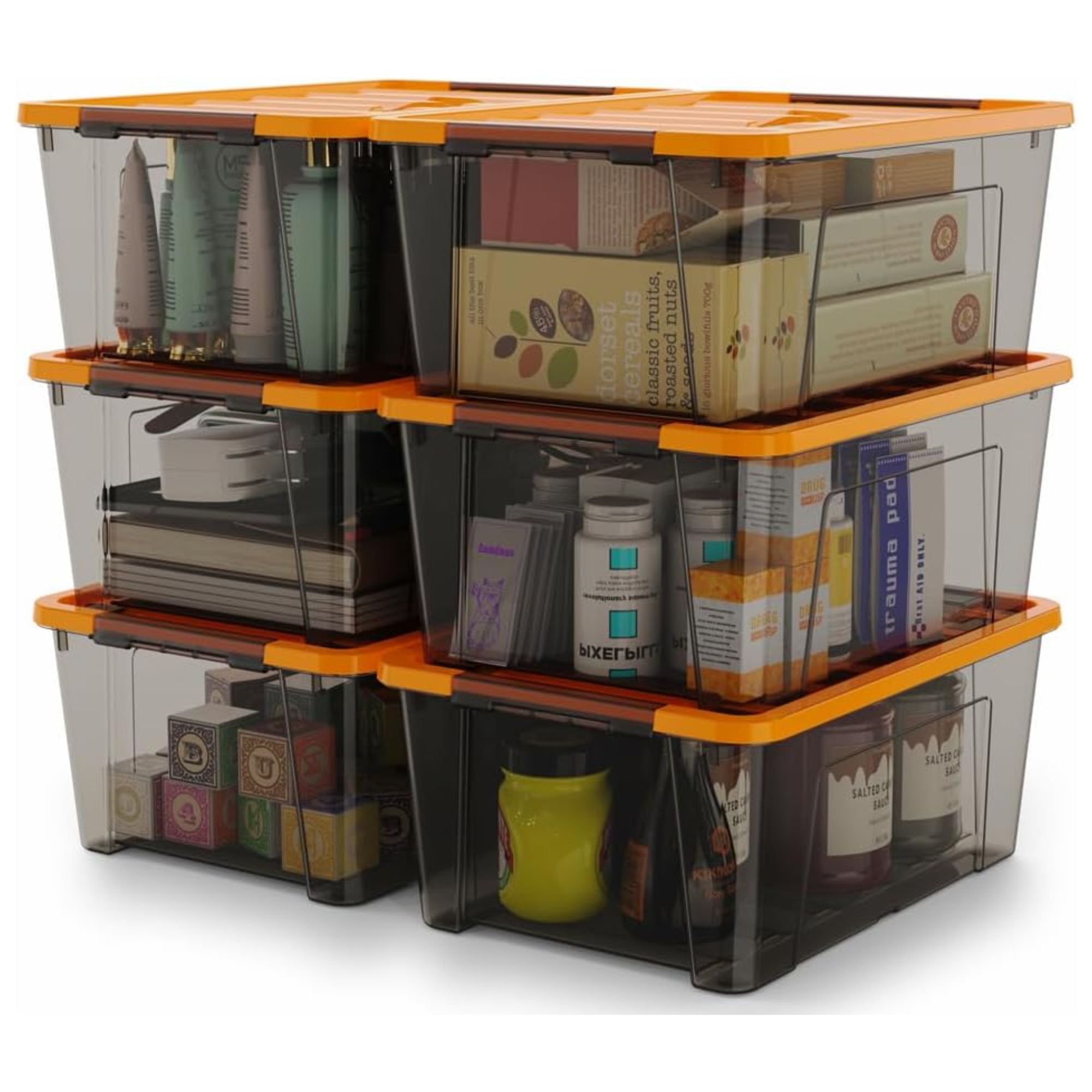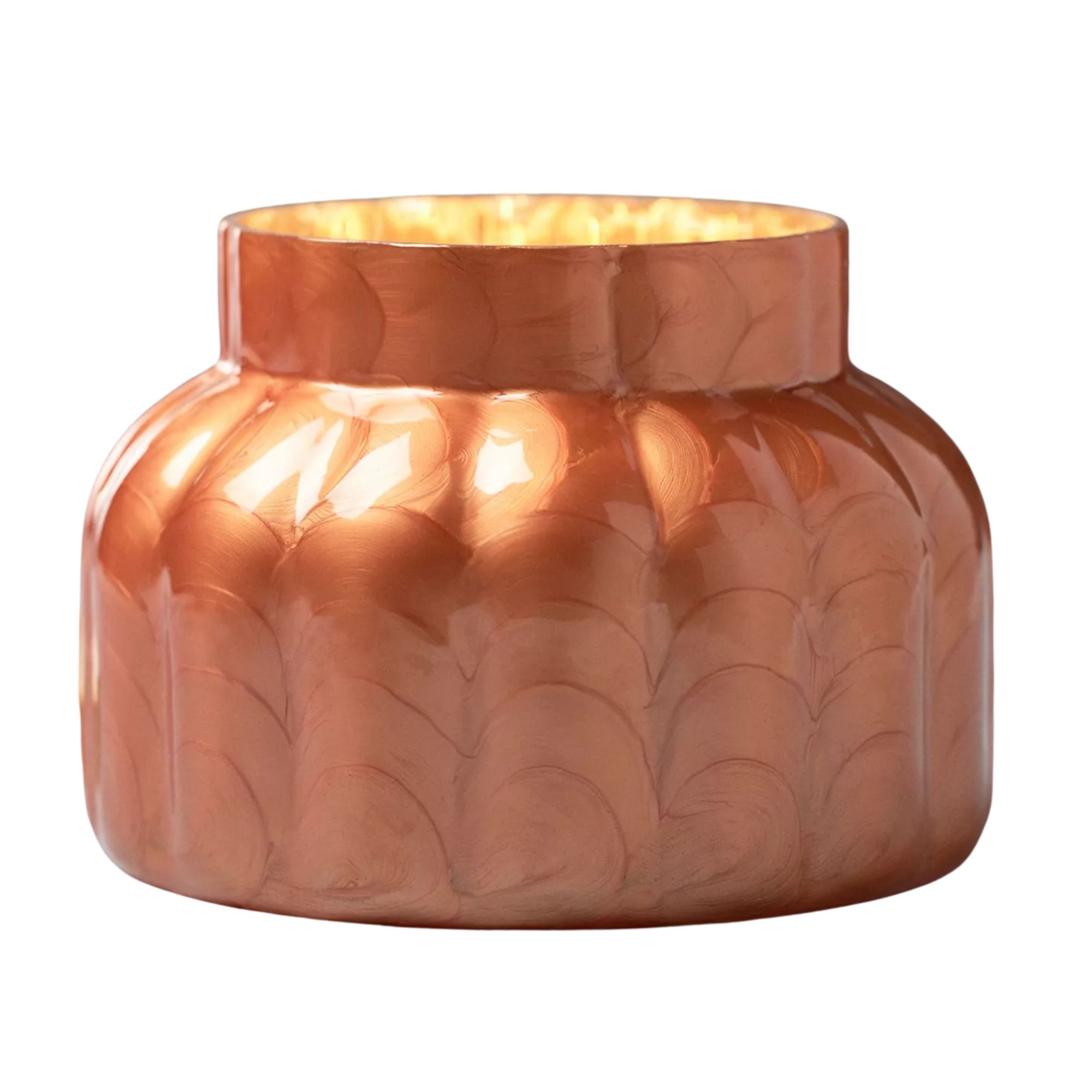'Future you will be thankful' – how to prepare a home for fall with expert tips on cleaning, decluttering, organizing, and maintaining your sanctuary
Welcome the changing of the seasons by blasting through the cobwebs and mess for a cozy, comfortable season spent indoors

Chiana Dickson

As the seasons transition, you may be puzzling over how to prepare a home for fall.
Hunkering down for the cozier seasons will include a bit of necessary preparation, including cleaning your gutters, decluttering your bathroom, and organizing your seasonal decor. It might sound like a slog, but you'll thank yourself later.
Here, home professionals share their top cleaning tips and Feng Shui insight, as well as brilliant decluttering, organization, and decor storage tricks that will make your home streamlined, cozy, and ready for cozy season in complete comfort.
How do I prepare my home for fall?
Cleaning for fall

Clean your home in September so you're ready for the new season ahead
According to experts, fall cleaning is actually more important than spring cleaning. A big part is that it helps to get your space ready for the approaching cooler months, but there are crucial reasons why cleaning after summer is essential, too.
Here are the main benefits:
- Gets rid of summer allergen buildup: There are plenty of cleaning tips for allergy sufferers, but one of the best is to do a final deep clean at the end of summer when you are closing your windows and doors for longer periods of time. Elizabeth Shields, manager at Super Cleaning Services, Louisville, says, ‘A clean and organized space not only creates a cozy atmosphere that aligns with fall's warmth but also reduces allergens, prevents mustiness in closed environments, and sets the stage for seasonal decor and indoor activities.' Clearing out allergens is a key part of maintaining a happy home microbiome, too.
- Covers areas you won't think about in spring: Spring cleaning checklists are thought to be some of the most in-depth cleaning to-do lists we tackle each year, but even they miss the most forgotten spring cleaning spots, which are vital areas of our homes that are needed in fall and winter, explains Aaron Christensen, cleaning guru at Homeaglow.
- Gives you time to schedule repairs: On the note of tackling otherwise forgotten areas, dealing with HVAC systems and chimneys in early fall gives you plenty of time to schedule maintenance and repairmen ahead of the busy winter season. Preparing ahead will ensure that important appliances such as heating systems or water heaters will not fail in the coldest of weather when you rely on them most, and workmen are few and far between. Scheduling fall repairs and maintenance on various systems around your home is also a great first step to winterizing your house.
- Tackles minor infestations of summer spiders: Although something we likely don't want to think about, the end of summer sees the peak of spider season, with these creepy crawlies welcoming themselves inside in search of mates, food, and shelter. Muffetta Krueger, founder of Muffetta’s House Keeping, points out that fall cleaning is important to helping get rid of these before they set up nests. It is also a good time to consider some ways to keep spiders away naturally, to prevent any more coming in as we transition between seasons. Don't forget to vacuum your baseboards, where spiders love to hide.
- Clears out summer dirt: No matter how many tips and tricks we employ throughout the year, our homes are naturally dirtier in summer, says Bonnie Borromea Tomlinson, professional organizer and author of Stop Buying Bins, available at Amazon. ‘More than likely, you did less cleaning in the summer,' she explains. 'Whether it was because it was too hot for the activity or you just weren't spending that much time inside, the interior of your home has gone a bit longer between cleanings. Now it's back-to-school time, then Halloween, Thanksgiving, Christmas, New Year's – all in succession. More inside time, more competing schedules and activities, more chances to create a mess. The heavy early fall cleaning is to reset your home so it's ready to take the hit the next four months will bring. And if you do it well, all you have to do going forward is maintain it.’
- Improves indoor air quality: While it is still important to open your windows regularly over winter to prevent musty smells and mold growth (for instance, after bathing or in the morning), we will be letting fresh air in a lot less than in spring and summer. This makes fall cleaning vital to give your home a big air out, says Ally Moisse, cleaning expert and owner of Pearl Lemon Cleaning, 'Fall cleaning is more important than spring cleaning because you are preparing to be stuck indoors for the six months or so. It's nice to clean during the fall because temperatures have dropped, but not too much to where it's uncomfortable or cost-ineffective to open windows.' This is one of the reasons so many countries have fall cleaning traditions that focus on airing out rooms before colder weather sets in.
Importantly, the best time to start cleaning for fall is in early September – doing so will help you get ahead of the bulk before the holidays arrive, and should help you avoid cleaning when feeling overwhelmed, too.
These are all of the tasks that the pros recommend ticking off:
Design expertise in your inbox – from inspiring decorating ideas and beautiful celebrity homes to practical gardening advice and shopping round-ups.
- Freshen up floors, carpets and rugs: After long summer days outside, you've likely walked dirt through from your backyard, so deep cleaning a carpet and cleaning an area rug in the fall will be much needed, freshening up your home ready for cozier nights in. Febreze Heavy Traffic Carpet Foam is top-rated at Amazon. You should also clean hardwood floors, and clean area rugs so they're not holding onto dust and grime. This will also eliminate any odors and help make your home smell nice. Taylor Riley, professional cleaner, founder of Boom Facility Service Advisors, and co-owner of Impact Cleaning Professionals, adds, 'Alternatively, you can hire a professional service for a more thorough clean. Professionals use advanced equipment and techniques to achieve a deeper clean and apply treatments that extend the life of your carpets.'
- Deep clean your couch: During fall and winter, your couch is an essential for cozy evenings spent in front of the fire or television. Cleaning any upholstery or cleaning your couch more specifically can help to keep it looking its best, and extend its lifespan, too. We recommend the Chemical Guys Foaming Citrus Fabric Clean & Drill Brush Kit available at Amazon for this.
- Clean your home's exterior: Household cleaning is usually associated with the inside of your home, with the exterior easily forgotten about. Freshening up the outside of your home and surrounding land will help to keep your home in top condition in the face of adverse weather, and deter pests. Sara San Angelo, professional cleaner and founder of The Cleaning Lady, says, 'Take inventory of the outside of your home and clean and store outdoor summer items like patio furniture, parasols, and pool equipment.' You should also clean your deck to prepare the wood for rain or snow, depending on your climate.
- Sweep your chimney for a thorough clean: You are more likely to use indoor fireplaces in fall and winter, so knowing how to prep your chimney for winter can help heat your home more effectively. Sara advises, 'If you have a fireplace that you use during the winter, you are going to want to get the chimney inspected and cleaned to mitigate any fire or smoke hazards.' There are a few tell-tale signs of when your chimney needs a clean to look out for, including burned wood smells when the fire is not lit, poorly burning fires, excessive smoke, and blackened glass.
- Tackle HVAC systems: Cleaning your HVAC system is tedious, but essential is we transition into fall. Kathy Cohoon, operations manager at Two Maids, explains that, 'Seasonal changes are a good time to change your filters to maintain a healthier home and potentially save you money. A clogged filter works harder to maintain the desired temperature, which in turn reduces energy efficiency and increases your utility bill.' If you have not had your HVAC system serviced in the last 12 months, now is a great time to book a professional to check over the mechanics and ensure it won't give out when you need it most.
- Dust ceiling lights and fans: If you have not touched your ceiling since spring, cleaning cobwebs from the corners and dusting light fixtures and fans should be the top of your fall cleaning checklist. To avoid common dusting mistakes, experts generally recommend that you start dusting high up in the space before working your way down so that any dust you disturb doesn't fall onto freshly cleaned surfaces, curbing the need to clean again. While you are up there, remember to change the ceiling fan direction to clockwise. While you might not think to use your fan in winter, a clockwise-running fan will help to push hot air back down into the room, helping keep you cozy and keep a house warm without turning up the heat.

These fall cleaning tasks will make your home feel fresh, warm and inviting.
- Clean windows: Get ready for autumn rays by streak-free cleaning of the windows inside and out to maximize the amount of natural light in your living spaces. Carolina Kazimierski, co-owner and president of Sophia’s Cleaning Service says, 'I think fall is the perfect time to take care of this because temperatures have cooled down enough to allow you to clean windows without your cleaning solution evaporating and risking a streaky finish. It can also be very helpful for clearing out any dust, dirt, and debris that may have accumulated around your windows from leaving them open in warmer weather.' For this, you can try cleaning with vinegar, or use a Karcher Electric Window Vacuum, available at Walmart, or the The Pink Stuff paste, also from Walmart.
- Don't forget about garages and basements: Our garages and basements are often neglected, and particularly prone to leaks, moisture, dust, and pests. The best way to clean garage floors is by vacuuming and mopping. Then, wipe down surfaces. Using one of the best dehumidifiers will also help to prevent mold and damp before the colder weather draws in these spaces, which usually lack climate control. A Swiffer Power Mop, available at Walmart, is helpful too for thorough and easy cleaning.
- Clean the refrigerator: A key task to tick off your fall cleaning checklist is cleaning the refrigerator. Anja Wolf, a kitchen expert and founder of I Love Cookware, makes the point that starting with a clean slate provides us with more motivation to try new fall recipes and stock up on all our favorite seasonal treats. 'Plus, who wants to discover a science experiment growing in the back of the fridge when you're trying to make a pumpkin pie?,' she adds. Remember to clean the refrigerator coils, too, and the top of the fridge, as grime, dust, and small bits of food can gather in these hidden spots. A great way to keep fridge odors at bay is by cleaning with baking soda.
- Freshen up your oven and microwave: Cleaning the kitchen – and some of the hardest-working appliances in this space – is well worth doing ahead of the holiday season. 'Prepare for fall gatherings by cleaning the oven inside and out,' advises Chiana Dickson, H&G's Solved content editor. 'No one enjoys this task, but dried grease and grime can compromise the taste of your food, as well as create odors. Personally, I like to clean an oven without chemicals and Steam cleaning an oven is quick and easy, and won't contaminate your food. I use the Black & Decker 7-in-1 steam mop, available at Amazon, with the oven brush attachment to soften grease and help it melt away. Then, I mop up the excess water and grease with paper towels for quick disposal.' You can also clean your microwave with lemon to keep it smelling fresh.
- Clear gutters: Wondering when the best time to clean gutters is? With all the trees losing their leaves in fall, your gutter can soon fill up and become clogged, so it's important to clean and clear them in preparation for the wetter weather. 'Clearing gutters of debris ensures proper drainage during fall rains, preventing water damage to the roof and foundation,' says Mick Jain, operations manager at VMAP cleaning services. It will also help prevent efflorescence, where chalky mineral deposits appear on brickwork, where water from gutters is not draining properly, but instead spilling down the exterior of your home.
All prices were correct at the time of publication.
Decluttering for fall

The changing of the season is a good time to embrace letting go of the old
The cozy season of fall is the ideal time to hit reset, especially ahead of multiple busy holiday seasons, to streamline your space and get it ready for hosting family and friends indoors.
There are several categories of household goods that professional organizers urge you to get rid of for fall:
- Bathroom clutter: The start of fall is a great time to clear out any old sun creams, bug sprays, and toiletries, making space for products you actually use, as well as any winter bathroom essentials. Make a bathroom decluttering checklist to guide you and focus on the end goal of a calmer, more streamlined space for unwinding. These items tend to expire within 12 months, so they likely won't be good for next year anyway. Vicky Hawthorn, professional organizer at You Need a Vicky, says, 'Double-check the use-by date on old toiletries and cosmetics. You’ll find a symbol on the back that suggests how long after opening it you should keep it. Any out-of-date products should be emptied and recycled. Stay as minimal as you can to alleviate space issues.'
- Expired food in the pantry: It's also a good idea to declutter and organize the pantry as we transition from the hot summer months to cooler and crisper weather. 'Fall usually means a change of temperature, and that change lends itself to changes in what you eat,' says Francesca Verri, professional organizer and certified minimalist life coach. 'Purging your food pantry now is a great way to prepare you for the new season and open your space up to the possibilities to create a healthy, in-season meal plan.'
- Children's toys and books: With fall comes the fast-approaching Christmas period, so, if you have children, now is a good time to declutter any old toys and books that they no longer play with to make room for new ones. 'If you think your kids can handle it, I suggest helping them declutter (or at least contain and organize) their toys and books, making their room and space more compatible to their interests and the new grade they are entering,' says Liora Seltzer, professional organizer and founder of What U Keep. Use a suitable storage solution for organizing the toys to keep, while old toys and books can be sold or donated, or consider sending them to Christmas present appeals near you in time for the holiday period.
- Backyard and shed mess: Decluttering the backyard or shed is only going to become less and less appealing as the days get shorter and the temperature drops, so spend whatever time you have now editing down outdoor tools, barbecue utensils, furniture, and gardening accessories. 'Future you will be thankful you tackled the garden and shed mess at the end of the summer season, rather than leaving it to gather dust and face the elements until next spring,' says Vicky.
- Paperwork: While possibly the most tedious category of household items to declutter, getting rid of paperwork and organizing your home office will mean you can enter the new season with a clear desk– and mind. 'Use the new season as an opportunity to organize accumulated paperwork,' says Meaghan Kessman, professional home organizer and founder of Meaghan Kessman Home Organization. 'Shred or recycle unnecessary documents, and file away important papers for a clutter-free workspace.'
- Clothes: Next, have an honest look at your closet and declutter items you haven't worn in a long time. Consider donating or discarding summer clothes, swimwear, and footwear that haven't seen the light of day this year, because the chances are you aren't going to fall in love with them next summer. A ruthless clear-out before adding anything new to our wardrobes will certainly make organizing a small closet with lots of clothes easier.

A clutter-free space is essential for relaxing at home during the colder months
- Seasonal decor: Think ahead for the holidays!' encourages home improvement expert Joshua Bartlett, who says now is the opportune moment for going through your summer decor and Christmas decorating ideas and getting rid of anything that you no longer love. To tackle these things to organize in September, start by discarding any broken baubles, garlands, and lights so you can see what you've got to use this upcoming holiday season. Then, donate anything you no longer see yourself using. 'Throughout the season, you can bring out seasonal decorations, Halloween decorations, and Thanksgiving decorations and put them back as needed,' says Josh. This will ensure you have everything that you need for beautiful fall decor, and nothing that you don't.
- Coffee tables: Your coffee table can act as a centerpiece in your living room and should be tastefully decorated for fall to elevate your living room. Christina Giaquinto, professional organizer at Modular Closets, recommends, 'Before fall, take time to declutter any decorations and trinkets you have on your coffee table and side tables next to your couch. This will free up space for you to add festive autumn decorations in your living room.'
- Old reading material: If you are an avid reader or collector of magazines, then this is a great time to switch out those summer additions with fall favorites and new editions that have been arriving for the last few months. Amanda Scott, professional home organizer and owner of Amanda Scott Home, recommends, ‘Culling your piled-up magazines and books. Recycle magazines that are more than two to three months old – if there is an article that you really want to read, consider ripping it out and recycling the rest. Place magazines you are keeping in a bin or storage basket, such as the Rosecliff Heights Bavan Rattan Basket available at Wayfair, to reduce visual clutter and relocate all your beach reads to the bookshelves. If your bookshelves are overflowing, declutter books you haven't touched in a long time and consider donating them.'
- Unused electronics: As we prepare to spend more time indoors, we will be fishing out our indoor entertainment systems, ready for longer, darker evenings. Because of this, Justin Waltz, brand president at decluttering experts, Junkluggers, recommends, ‘decluttering any electronic gadgets or entertainment systems that haven’t been used in a while. Clearing out these items will make the space seem less cluttered, especially as the days get shorter and you spend more time indoors.’
- Bedside tables: Bedside tables are essential, but they are also magnets for clutter. Amanda says, ‘If you’re like most people, your nightstand is a collection of books and magazines you mean to read. Declutter your nightstand to only the fall essentials, such as a book, clock, reading glasses, a journal and pen, lotion, and maybe a candle.'

This Joseph Joseph bathroom caddy makes decluttering and sorting your bathroom easy, with multiple storage compartments. It also dismantles for quick and convenient cleaning.
Organizing for fall

Next, turn your attention to organizing ahead of cozy season.
Once you've cleaned and decluttered for fall, don't forget about organizing. These are the two spots our experts recommend tackling at this time of year:
1. Your entryway

Entryways can quickly become messy during fall, so get it organized ahead of time, pros urge
As fall rolls in, most of our attention will be on replacing decor with autumnal or seasonal pieces and cozying up the space for longer nights spent indoors. However, there is one spot in our homes we should pay the most attention to, especially at the beginning of the season – the entryway.
Organizing entryways and mudrooms may seem like a never-ending battle, but experts say that neglecting this could result in chaos further down the road.
Professional home organizer Barbara Brock, adds, ‘Organizing doesn’t necessarily mean getting rid of things, but it does mean reviewing what you have. It's a way of prioritizing what is important in fall and what is not. But I subscribe to the motto: Clear out, Clear head.'
Here's how to organize this vital space:
- Use baskets: One of many storage products professional organizers can’t live without, storage baskets are essential when dealing with smaller ‘floating’ items such as hats and gloves in fall and winter, says Heather Aiello, professional organizer and founder of The Organized You. ‘We usually dedicate a basket for each person in the family and add a label,' she says. 'This makes it much easier to put things away and to grab them when you are running out the door – and you don't end up with two odd gloves.’
- Only keep winter jackets out: You should rotate your coats and jackets seasonally to make extra space to move in your entryway or mudroom, says Allyson Van Wagnen, professional organizer and owner of Organizing Indy. She explains, ‘In colder months, keep your most worn items near your entryway. This doesn’t mean every single coat or jacket your family has. Try to narrow it down to one to two per person,’ she recommends. This is an especially important tip if you are organizing a small entryway where you have to squeeze everyone's winter clothing into one tight spot.
- Designate a wet-item drop zone: When designing a mudroom or laying out an entryway, it is a good idea to designate one spot as a wet-item drop zone. Heather advises, ‘A weatherproof drop area [such as this Shoe & Boot tray from The Container Store] is best to help contain mud, snow, and rainwater before it has the chance to muddy your floors. Hooks or coat racks will serve the same purpose.'
- Use off-the-floor storage to make cleaning easier: Whether you have a large mudroom or a small entrance, keeping things off the floor in storage organizers will make cleaning a floor without streaks easier when muddy footprints are unavoidable. ‘With designated storage solutions in place, cleaning up becomes more efficient,’ Karina Toner, operations manager at Spekless Cleaning assures. ‘Entryways are high-traffic zones prone to collecting dirt, leaves, and debris during fall. Easy-to-clean surfaces and storage solutions can simplify maintenance and make cleaning a breeze.’
2. Your closet

Swap your summer clothes for warmer, fall and winter garments.
One of the sneaky signs fall is upon us is when our wardrobe leaves us just a little bit too chilly, and you know it's finally time to organize your closet for the cooler weather.
It's vital to get your storage and organization system right when tackling your seasonal clothing transition, so you don't end up with a closet that's overcrowded, or seasonal items put away in a way that damages them, or which take up too much space elsewhere.
Here's how our experts recommend organizing a closet for colder weather:
- Transition between summer and fall clothing: Audra George, professional home organizer and owner of Pretty Neat Home Organizing, Oklahoma, reminds us, ‘First and foremost, especially in a small closet, we suggest removing last season's wardrobe to create space for your bulkier fall and winter items. These can be stored away in a lidded bin up high, or another space.’ However, this can vary depending on your climate. If you live somewhere with drastic changes between seasons, then this all-in approach to organizing, removing all your warm-weather clothing in one go, will work for you. However, if you live somewhere with relatively mild winters, then you can likely transition your clothing gradually between summer and fall, wearing pieces from both wardrobes as the weather gently fluctuates. These minor tweaks for an organized closet can help you to get more use out of your clothes than switching right away – especially if you have to organize a closet without seasonal storage.
- Clean the closet itself: The chances are you pay particular attention to washing your clothes correctly, but forget about the closet itself. When making the transition between summer and fall, take the time to also clean your clothes closet using a vacuum and a damp microfiber cloth to get rid of dust and dirt that may attract bugs, suggests Karina Toner, cleaning expert. You can also add a fragrance to your closet in the form of sachets of dried lavender and cedar, available at Etsy, to help keep your closet smelling fresh and deter moths. Make sure it's all dry before putting your belongings back inside.
- Organize fall items into categories: Keeping your clothes categorized is the best way to keep your fall clothes easy to sort. ‘In cooler months, keep all fall items front and center for easy access,’ says professional organizer Bonnie. ‘Separate pants, shirts, dresses, skirts, sweaters, and jackets, for example,' she suggests. You can use vacuum bags from Amazon to compress clothing after you've washed and fully dried it, and store clothes longer term.
- Split items between your closet and dresser: 'While the closet is usually a go-to for most of our clothing, many fall and winter-related clothing pieces need to be stored in dressers to maximize space and keep sweaters in shape. Amélie Saint-Jaques, professional home organizer and owner of Amélie Organizes says, ‘Cold-weather items are typically bulkier than summer ones, so it's important to store things properly to maximize space. Consider tiered pants hangers [such as the Mainstays Pant & Skirt Hanger at Walmart] to hang more pants in less space. Keep the two or three jackets and pairs of boots you wear most near your front door instead of in your bedroom closet. You can also consider organizing a capsule closet, to limit the bulky items to only those you truly love and wear often,’ she suggests.
- Use vertical storage to save space: If moving more clothes into the dresser storage still hasn't freed up enough space in your closet, consider using other vertical storage to save space. Audra says, ‘Utilize your whole closet space. Don't forget about that vertical space; even the door space is an option for a storage solution in your closet. Store scarves and fall accessories in a pocket organizer on the door [such as the Simple Houseware Over The Door Hanging Organizer available at Amazon]. If your closet is too full, be creative and think of other spaces to utilize. Under-bed storage ideas are a great option for storage containers of shoes, boots, and more,’ she adds.
Storage for fall

You'll be able stash away your fall decor with ease if you plan ahead now
Now that you’ve decluttered all necessary items, it’s time to plan ahead so you're clear on where you’ll be storing your fall decor when you're done with it.
Organization and storage expert Jeff Meyers, president of ShelfGenie, a Neighborly company, says, 'The main objective when storing fall decor is making sure things are organized well, so that come next year, you won’t have a headache rummaging through endless boxes.
‘Haphazardly throwing garlands, lights, and faux pumpkins into boxes may seem like the easiest approach, but this can lead to a tangled mess next holiday season,' he continues.
To help you work out and how to keep the items you do love (after decluttering those you don't) safe and neatly packed away so that decorating next fall is easier than ever, here are the professional’s top tips:
- Establish the best place to store your fall decor in your home: Professional organizer Nicole Gabai, founder of B.Organized explains that her ‘zones’ principle can be helpful here. 'Many people make the mistake of assigning equal importance to all objects in a room. It is important to give top priority to the objects that you use often – these should be in the most convenient place, which is zone one,' she explains. 'Objects you use less often should be in zone two or three. Then, items used yearly, such as fall decor, should be zone four.' So, where might zone four of your home be? 'Zone four may perhaps be a special shelf in the basement, or a closet designated to seasonal items,' Nicole says. Establishing the perfect ‘zone four’ spot in your home will help you store your fall decor in the most convenient place.
- Create categories of fall decor items: You might assume that all fall decorations can be placed into the same boxes with no order – because you’ll be unpacking all of these items at the same time, right? In fact, sorting your decorations into categories is often much more sensible, to ensure that unpacking (and repacking again) is as logical and stress-free as it can be. Jeff says, ‘To properly organize fall decorations, it is best to create categories such as these: Garlands, fall wreaths, large decorations, small decorations, and Halloween-themed serving plates, bowls, and cups.'
- Use clear or colored storage boxes: As is the case with storing all kinds of items, organizing your fall decorations into clear storage boxes is a no-brainer – doing so will allow you to see the contents with ease, especially if you also have labels. Leslie Kilgour, professional organizer and founder of Get It Straight, says, 'I always go with clear bins so that we can see inside of them, and make sure to label the bin. Since the bins are plastic, they can be safely stored in a shed, basement, garage, or storage space.'
- Stow more delicate items away safely: It’s tempting to throw everything in your storage boxes to get the job over and done with, but your future self will thank you for taking care when dealing with delicate or fragile fall decor items. Leslie suggests a stacking method. 'If you have ceramic pumpkins or in fact, anything breakable, I would wrap everything in tissue paper and bubble wrap,' she says. 'Then, store anything small and breakable in your smaller storage bins, and put the small bins into a larger bin.' Jeff adds that these should also be stored in locations that don't get a lot of traffic or activity.
- Save yourself the nightmare of unraveling knots with this storage trick: Anyone who has ever unpacked any kind of decorations knows that knotted lights or garlands – while ideal for our fall mantel ideas – are a nightmare that should be avoided at all costs. And if you know how to store yours away correctly, you can! 'If you use any Halloween-themed themed-lights or leaf garlands, you will want to separate each string and secure them neatly using electrical tape or a zip tie,' Jeff says. 'This will keep each string separated and ready to use next year.' Alternatively, Jeff suggests picking up a storage reel for your lights at Amazon, which he explains, 'will keep them neat and organized, which in turn reduces the risk of broken bulbs or frayed wires.'
- Contain wreaths appropriately to help retain their shape: Similarly to Christmas wreaths, fall wreaths can be especially tricky to store, given their awkward shape and the fact that they are liable to breakage. 'Wrap your fall wreaths in tissue paper and place them in any box that is wider than the wreath’s diameter, so you don’t bend any branches while packing it up', says Jeff. 'You could also look for circular boxes designed to hold wreaths.' In fact, there are plenty of wreath storage bags available on Amazon that will fit any size wreath snugly, ensuring it doesn’t shuffle around if moved. When storing fall wreaths, it’s also important to remember to place them on top of any other storage boxes or on their own shelf or surface. Placing other decor or boxes, on top of wreaths – especially those in storage bags or cardboard boxes – risks squashing and damaging them.
Fall Feng Shui

Experts highlight the importance of Feng Shui-ing your home for fall
The arrival of crisp air and the changing colors in fall make it the perfect time to refresh your home's energy by introducing fall Feng Shui practices into your home, which can help create a harmonious and balanced living space that embraces the energy around us.
Here's how to use Feng Shui in your home in fall:
- Embrace warm and earthy tones: Marie Diamond, Feng Shui master and bestselling author of Your Home Is a Vision Board, available at Amazon says, 'Orange ignites fresh ideas and boosts motivation for new projects. This vibrant color inspires enthusiasm for life and seasonal changes. Adding orange accents like throw pillows or candles can fuel your creative energy.' For that reason, they're a fall Feng Shui essential for a cozier home.
- Rearrange your furniture: Feng Shui expert Victor Cheung knows the importance of creating good feng shui in your home when approaching life changes, such as that of a changing season. 'During the fall you should place furniture in a way that encourages conversation and interaction while also allowing for easy movement throughout the space,' he suggests. This is especially important as the weather cools down and we move our hosting indoors.
- Enhance natural light: Where there is light, there is good energy, Feng Shui experts believe. When it comes to fall, maximizing natural light is a necessity, especially as the days shorten and the skies become greyer in parts, reminds Punteha van Terheyden, Head of Solved at Homes & Gardens. She says, 'Open curtains and blinds throughout the day to let in sunlight, which symbolizes clarity and positive energy. Strategically place round mirrors, like this one from Wayfair, to reflect and amplify the warm glow of fall sunsets, too,' she suggests. 'Just be sure to stick to the Feng Shui mirror rules to avoid bouncing positive energy back out of the door.'
- Cleanse the air: After you have cleaned and decluttered your home, the final step to Feng Shui your home for fall is to clear the stale summer energy out of your space. While there are several ways you can do this, Daniel Ulfland, the founder of Flitch, an online interior styling platform, recommends cleansing a house with sage. He explains, 'Burning sage, also known as ‘smudging’, is an ancient practice believed to cleanse spaces of negative energy. This tradition is thought to have prehistoric origins, but today it is still used worldwide. Some associate sage with wisdom and increased spiritual awareness. For those interested in trying this practice, it's suggested to open doors and windows before lighting the sage, use the smoke to cleanse your hands and move around your home to cleanse the air,' he says. If you want to avoid using sage for ethical reasons, consider practices such as blowing cinnamon on your front door or cleansing a house with salt instead.
Incorporating Feng Shui for fall does not need a major redesign; rather, it is about making intentional decisions that promote positive energy flow by embracing the natural elements of the season.
You can also use essential oils with warm and grounding scents, such as cinnamon, clove, and cedarwood, to help achieve this, as your home fragrance can affect Feng Shui as much as your layout. Diffusing these aromas can enhance the overall atmosphere and promote a sense of comfort and balance.
Once January rolls around, consider the cleaning essentials to complete before the Feng Shui New Year.
Home maintenance

Don't overlook these home maintenance tasks
Finally, there are plenty of important fall home maintenance tips which the pros never skip.
In fall, they recommend that you:
- Improve home security for darker days: The fall months often see an increase in break-ins as the nights get darker. Because of this, it is important to protect your home and consider upgrading your home security with some of the best home security systems. Kevin Spencer, head of product management at Yale Home explains, ‘The garden should be the first line of defense for your home. Burglars use the cover of darkness and overgrown trees and shrubs to move around a garden undetected, so it’s worth ensuring the exterior of your property is up to scratch to beat the burglars this autumn. It’s important to look at other forms of protection for the front door, too. It pays to ensure the front of your home is well-lit, so security lighting is a great investment. Alongside lighting, a front door security camera or smart video doorbell [such as the Ring Battery Doorbell Plus available at Amazon] is effective in ensuring you can keep an eye on the front of your home from anywhere via a smartphone. It’s also worth ensuring that windows are kept shut and locked at all times, as burglars will use open windows to gain easy access to your home.'
- Check your boiler and radiators: If your home has central heating, it is wise to check the system before turning it back on after summer. Simon Morris from The Radiator Company says, 'Once fall arrives and the nights draw in, it’s tempting to turn the heating on. To be sure that your heating system is ready to jump into life when you need it, book an annual service before the weather changes. A good plumber will keep everything running smoothly and efficiently, including bleeding radiators and topping up the inhibitor in your system to prevent the build-up of damaging sludge.’ Bleeding radiators will also help you to save money. You might also want to invest in some hardier insulation types ahead of the cold snap, too.
- Prepare your exterior woodwork: Richard Bradley, of exterior paints and finish company V33 explains, ‘Time spent now properly protecting it means exterior woodwork will be shielded from the worst weather of those seasons, saving you repair time and money in the long run. 'Particularly important is making sure external woodwork is waterproof and protected from mold, mildew, and those pests that cause rot. In addition, the timber should be shielded from the effects of repeated exposure to sunlight, which can damage it. Applying a decent wood stain [such as the Varathane Premium Fast Dry Wood Stain available at Walmart] is an effective way of creating a barrier, which protects the wood from water and the sun.’ Don't forget to clean and maintain your wooden house numbers and any outdoor furniture before fall sets in to ensure longevity.
- Check your electrics: Nigel Best, director of electrical training provider, Electrician Courses 4U warns, 'With fall approaching, the nights are drawing in and it won’t be long until temperatures start to dip. As the weather changes, electricity usage across all homes will increase.' Therefore, he encourages you to check your consumer unit, lights, and light switch covers. On top of carrying out these inspections around the home, it’s also advisable to get your home emergency ready and prepare your home for a power cut with a dedicated kit, just in case. This should include battery-powered torches, such as the Victoper LED Flashlight available at Amazon, which is also waterproof and zoomable, spare batteries, a fully charged portable battery pack for your mobile phone, warm blankets, and a gas stove.
Fall preparation essentials

When packing seasonal items away for the next six months, consider using underbed storage ideas to keep them tucked away but still within easy reach. As the seasons change, simply swap out the contents to keep everything neat and orderly.

This white burning sage is organically and sustainably grown, and can be used for smudging, to cleanse the energy of your home for the new season.

Embrace the new season with this spiced harvest scented multi-surface cleaner, which cuts through 100% of dirt, grease, and grime.

There's no reason why your storage can't be seasonal, too. This gorgeous basket is roomy and reinforced, for long-lasting durability.

This stunning hook from Anthropologie is ideal for overhauling your mudroom organization, for hanging up bags and coats, and keeping them off the floor.

Make a stylish statement with this fall-scented candle, that is hand-poured with a plant-based wax blend.
Meet the experts

Joshua has been responsible for the upkeep of several homes, apartments, and rentals. He created I’ll Just Fix It Myself to help others learn alongside him, sharing what he has learned through his decades of successes – and failures – to tackle home improvement.

Jeff is the president of ShelfGenie, a Neighborly company, which focuses on home organization and storage solution services.

Nicole Gabai has been a professional organizer for over 20 years, and is the founder of B. Organized, which offers organization services for both homes and offices. She is a Golden Circle member of NAPO (National Association of Productivity & Organizing Professionals), and the author of the bestseller The Art of Organizing: An Artful Guide to an Organized Life.
Most home maintenance tasks only need to be carried out twice a year, usually in spring and fall, however, you can stay on top of yours by completing smaller tasks such as checking smoke detectors and minor repairs more regularly throughout the year to reduce your to-do list in these pivotal seasons.

Ottilie joined Homes & Gardens in 2024 as the News Writer on Solved, after finishing a Master's in Magazine Journalism at City, University of London. Now, as the Sleep Editor, she spends her days hunting deals and producing content on all things sleep – from mattresses and sheets to protectors and pillows, all of which she tests in her own home. She also has particular expertise in home fragrance, covering everything from candles to reed diffusers.
Previously, she has written for Livingetc and Motorsport Magazine, and also has a Master's degree in English Literature and History of Art from the University of Edinburgh, where she developed a love for inspiring interiors and architecture.
- Chiana DicksonContent Editor



